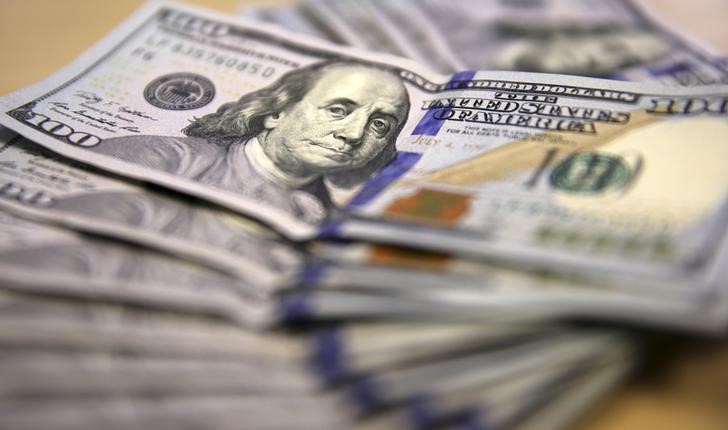By Gina Lee
Investing.com – The dollar was down on Tuesday morning in Asia, despite optimism over the latest positive news on the COVID-19 vaccine front. This is as more U.S. states introduce restrictive measures to curb the virus and as worries about a smooth transfer of presidential power in the U.S. in January mount up.
The U.S. Dollar Index Futures that tracks the greenback against a basket of other currencies inched down 0.04% to 92.502 by 10:13 PM ET (2:13 AM GMT).
Moderna Inc (NASDAQ:MRNA) reported a 94.5% efficacy rate for its candidate mRNA-1273 on Monday on the back of its large, late-stage phase III COVE study. The news follows Pfizer Inc (NYSE:PFE) and BioNTech's (F:22UAy) announcement during the previous week that their jointly developed candidate, BNT162b2, prevented more than 90% of symptomatic infections.
The Pfizer news saw the dollar rise against safe-haven currencies such as the yen and Swiss franc. However, the logistics of producing and distributing the vaccine, distributing the vaccine, which suggests it is not likely to be available anytime soon, curbed the initial enthusiasm and subdued market reactions.
Also dampening the enthusiasm is the continual rise in COVID-19 cases globally. Several U.S. states reported a record number of cases, hospitalizations and deaths, with officials’ response to these figures of more concern to investors. The U.K., Europe and Japan reported an increased number of cases, with over 54.8 million cases globally as of Nov.17, according to Johns Hopkins University.
Concerns are also growing about the smooth transition of power from incumbent U.S. President Donald Trump’s administration to that of President-elect Joe Biden, with the Trump administration recalcitrant to pass over the control of government, and thus hampering the Biden administration’s ability to handle ability to handle the COVID-19 situation and stimulate economic recovery.
Some investors remained pessimistic about the dollar’s short-term prospects.
“The market reaction has been limited because it will take time to distribute the vaccine, and there is uncertainty about U.S. politics. Unless we clear that hurdle, the dollar won’t rise. The dollar looks particularly weak against the yuan,” Mizuho Securities chief foreign exchange strategist Masafumi Yamamoto told Reuters.
The USD/JPY pair inched down 0.03% to 104.53.
The AUD/USD pair inched up 0.03% to 0.7320. The AUD held onto its overnight gains against the dollar after the Reserve Bank of Australia (RBA) released the minutes from its latest policy meeting. The minutes indicated that the RBA was ready to provide even more policy stimulus if necessary, in the wake of cutting interest rates to record lows during the meeting.
The NZD/USD pair inched up 0.04% to 0.6905. The NZD was at its strongest in more than a year with investors easing bets for additional monetary easing.
The USD/CNY pair edged down 0.20% to 6.5697. The onshore yuan will be under scrutiny as investors see whether it will reach a record 28-month high.
The GBP/USD pair edged up 0.19% to 1.3216. The pound saw gains over reports that the U.K. and the European Union could reach a Brexit divorce agreement by the beginning of the following week.
U.S. retail sales and industrial production data is due later in the day, following China’s release of its own retail sales and industrial production data on Monday.
